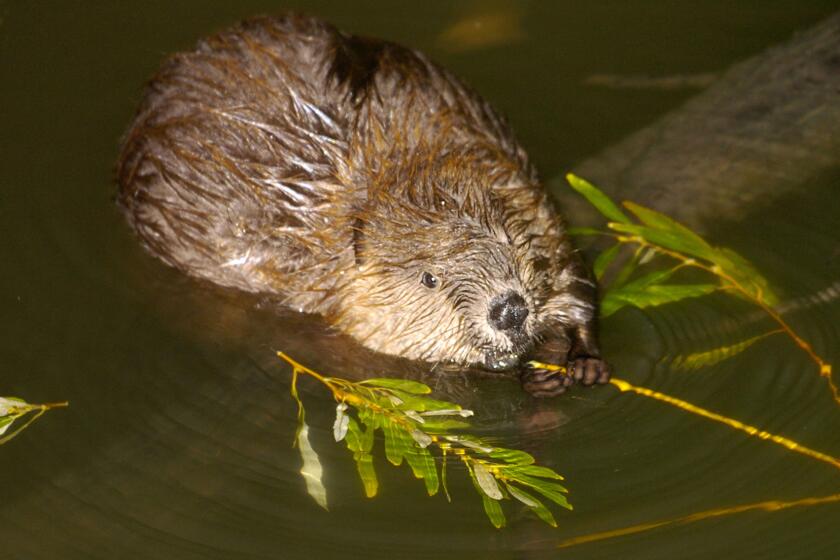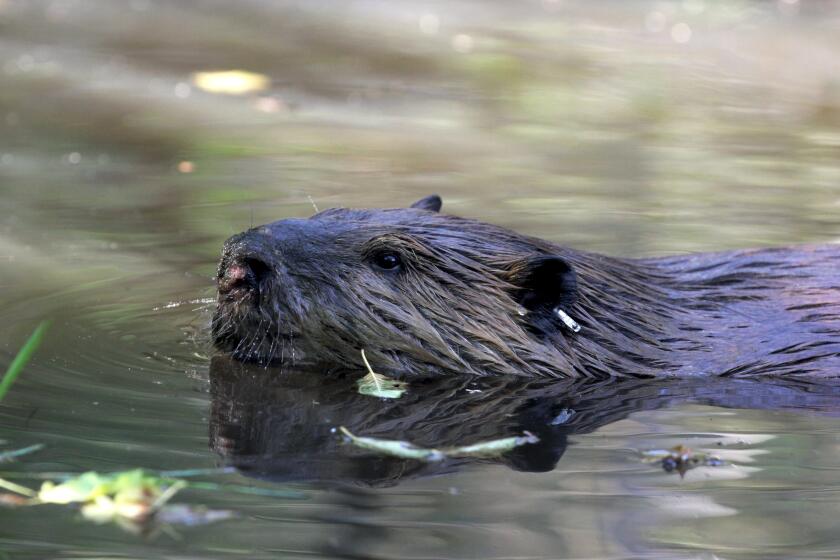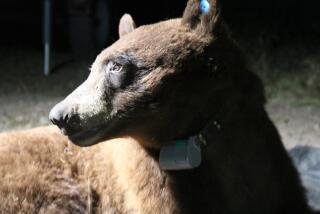Baby beaver sighting brings hopes of comeback for California’s little climate superheroes
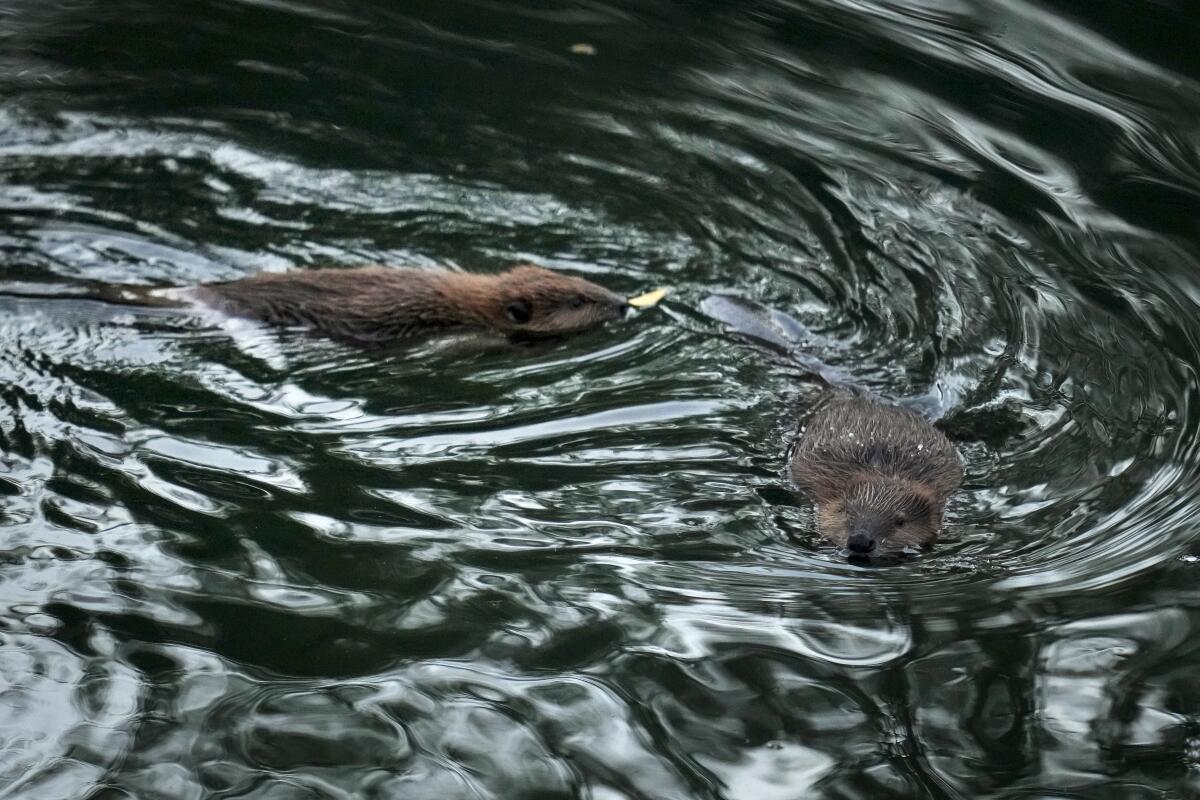
Bill Leikam was reviewing footage from a wildlife camera he placed along a Palo Alto creekbed recently when something unfamiliar scampered across the screen.
“I have enough experience with the wildlife out there to be able to identify every one of them just by their movement — this one had me baffled,” said Leikam, president and co-founder of the Urban Wildlife Research Project. “I’d never seen a critter out there moving like this little guy did.”
Leikam, who is better known as The Fox Guy, watched the clip over and over. Eventually, he recognized the mysterious creature as a critically important species that has long been missing from his beloved Baylands — a mammal that California wildlife officials have hailed as a “climate hero.”
“I just stopped and said to myself, ‘Is that a baby beaver?’” Leikam said.
A beaver pup spotted in the Palo Alto area, the first sighting in decades. (Courtesy of Bill Leikam, president and co-founder of the Urban Wildlife Research Project)
The kit sighting in Matadero Creek has been confirmed by local wildlife experts and even a historical ecologist. It marks the first time in decades — if not more than a century — that a beaver colony has taken up residence in this region south of the San Francisco Bay.
For state wildlife officials and “beaver believers,” the camera trap images are cause for celebration. After being hunted and harassed for hundreds of years, the North American beaver is poised to make a comeback in the Golden State, and its resurgence could help fight certain effects of climate change.
While there have been other recent reports of beaver activity across the Bay Area, Leikam said this is the first concrete evidence. More importantly, it suggests a successful re-population of the area.
Last fall, Leikam spotted a pair of beavers along Matadero Creek and hoped they would settle in and create a beaver pup.
“It’s unique that they’re establishing,” said Emily Fairfax, a longtime California beaver researcher who now works as an assistant professor at the University of Minnesota. “This is a stamp of approval to have a beaver move in.”
Since the mid- to late 1800s, when California beavers were pushed nearly to extinction by the fur trade, the semi-aquatic rodents have made small inroads into the Bay Area and other regions — a process complicated by the lining of tributaries with concrete, making them inhospitable for the flat-tailed animal.
Wildlife officials launch a restoration program for North American beavers, saying their dams can increase water storage and create natural firebreaks.
“It’s one thing if you find a dispersing beaver somewhere, it’s a totally different ballgame when you find that you have an established, reproducing population,” said Valerie Cook, manager of the California Department of Fish and Wildlife’s newly established Beaver Restoration Program. “It really reflects that shift in perception and people starting to recognize that these are not a nuisance species.”
For decades, developers, municipalities and farmers focused on beavers as a problem that required mitigation or removal. Now, the species known as Castor canadensis is seen as offering myriad benefits: It can help to mitigate drought and wildfires through natural water management; it is considered a keystone species for its ability to foster biodiversity; and it can restore habitat through its ecosystem engineering.
“They can create wetlands in basically any ecosystem,” said Fairfax, who described beavers as a free workforce that California has yet to take full advantage of. “The fires are catastrophic and the droughts are widespread and unrelenting — it feels like we have to exhaust all options.”
While experts have known the advantages of beavers for decades — a 1950 Outdoor California magazine highlighted a short-lived effort to move beavers via parachute to improve water supplies — it’s only in the last year that state officials have formed a new beaver restoration program.
“California is paving a pathway forward for beavers to have a much better future in this state and to actually be part of dealing with things like droughts and floods and wildfires,” Fairfax said.
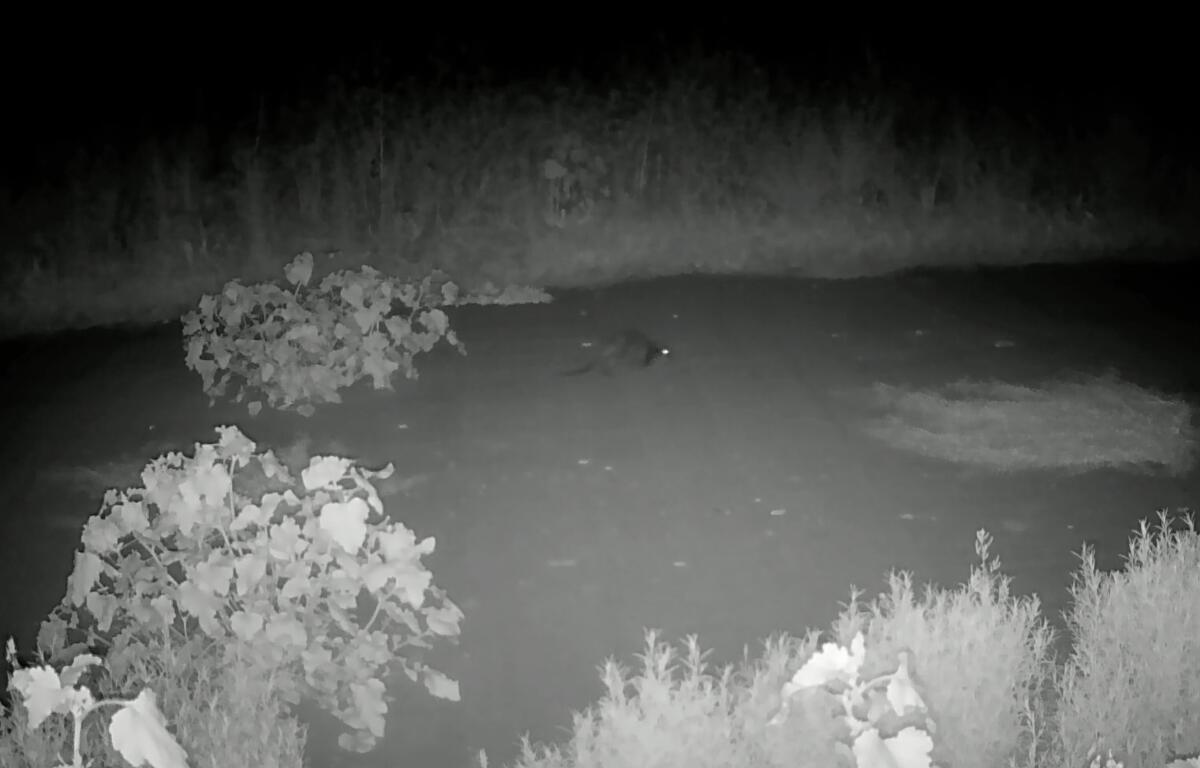
Cook, of the state’s beaver restoration program, said their mission is two-fold: helping translocate beavers to regions where there are few to no beavers, and promoting human-beaver coexistence.
She acknowledged that beavers can still cause conflicts with landowners, but there are ways to mitigate those issues. Instead of eradication, people need to focus on the species’ positive contributions, she said.
Beavers are experts at conserving and retaining water, helping minimize dry stream beds during drought and improving summer baseflows — all of which better support a variety of wildlife.
“River otters come back, mink come back, all manner of birds come back,” said Rick Lanman, president of the Institute for Historical Ecology. Lanman, the historical ecologist who helped determine the last time beavers were in Palo Alto waterways, called the ponds created by beaver dams “a giant cafeteria for baby trout and salmon.”
Beaver ponds are also hugely beneficial during wildfires, because they act as a physical barrier to spreading flames, and they reduce the flammability of nearby plants by increasing their water content. They also provide wildlife a refuge from approaching fire and supply firefighters with water in remote places, Lanman said.
“That’s wildfire refugia — that’s more fuel moisture, more green; that’s less severe burning or a bit of a fire buffer,” Cook said.
The rodents are natural engineers who can restore wetlands.
There are no population estimates for California beavers, but Fairfax said the numbers statewide are “relatively tiny.”
“Everywhere could use more,” she said. Other western states, such as Colorado and Utah, have supported beavers more aggressively in the last few years, and Fairfax said she is hopeful California can begin to catch up.
For Leikam, who has been monitoring this area of Palo Alto Baylands for more than a decade, the new beaver offspring is the latest sign of an improving ecosystem.
“I’m optimistic about wildlife,” said Leikam, who has spent years tracking gray foxes.
While he has yet to see evidence that this new beaver family is building a dam — he suspects they are living in deep burrows within the creek’s bank — he’s hopeful he might see one in the future, which would support a host of new animals.
“This new beaver family is really important if they survive and reproduce,” said Lanman, who hopes they expand their range in the Bay Area. “It’s just remarkable.”
More to Read
Sign up for Essential California
The most important California stories and recommendations in your inbox every morning.
You may occasionally receive promotional content from the Los Angeles Times.
